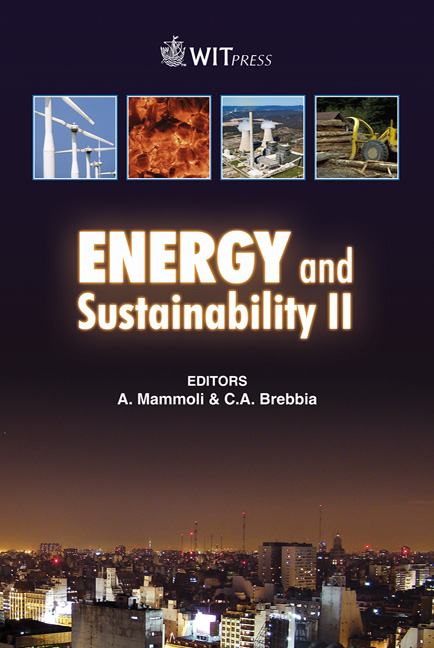Pyrolysis Of Physic Nut (Jatropha Curcas L.) Residue Under Isothermal And Dynamic Heating Processes
Price
Free (open access)
Transaction
Volume
121
Pages
15
Published
2009
Size
1,516 kb
Paper DOI
10.2495/ESUS090151
Copyright
WIT Press
Author(s)
D. Atong, C. Pechyen, D. Aht-Ong & V. Sricharoenchaikul
Abstract
Pyrolysis of physic nut residues was conducted under isothermal and dynamic heating conditions in a vertical fixed bed type reactor at final temperature of 500, 700 and 900°C under N2. The solid, liquid, and gas products were in the ranges of 26.94-29.04, 9.43-21.36, 51.70-61.54 wt% for slow pyrolysis, while those attained from rapid condition were 11.16-15.25, 15.00-23.43, and 61.32- 73.84 wt%, respectively. Results indicated that char decreased with increasing temperature and hold time. Char with highest fixed carbon of 85.32% with relatively low volatiles of 9.28% was obtained by pyrolysis at 900°C for 60 min. Release of volatile matter led to development of char porous structure. The maximum liquid product of 21.35% was observed at the pyrolysis temperature of 900°C for 60 min under dynamic heating and 61.54% under isothermal heating at 500°C. Decreasing hold time to 15 min caused 2 times decrease of liquid yields. The liquid product mainly consisted of several fatty acids such as oleic acid, palmitic acid and lignoleic acid in the range of 15-19%, 40-45%, and 25- 34%, respectively. Increase in temperature and hold time lead to greater production of hydrogen, carbon monoxide, and light hydrocarbons. Mode of heating displayed significant effect to the product distribution, LHV and H2/CO ratio. Higher LHV values were obtained at 900°C under rapid pyrolysis condition. Mole ratio of H2/CO close to unity was found in the case of pyrolysis at 900°C for both slow and rapid trials. The LHV obtained from slow processes were 7.8-15.0 MJ/Nm3 while those from rapid runs were 14.8-17.2 MJ/Nm3. Keywords: pyrolysis, physic nut residue, fixed bed.
Keywords
pyrolysis, physic nut residue, fixed bed





